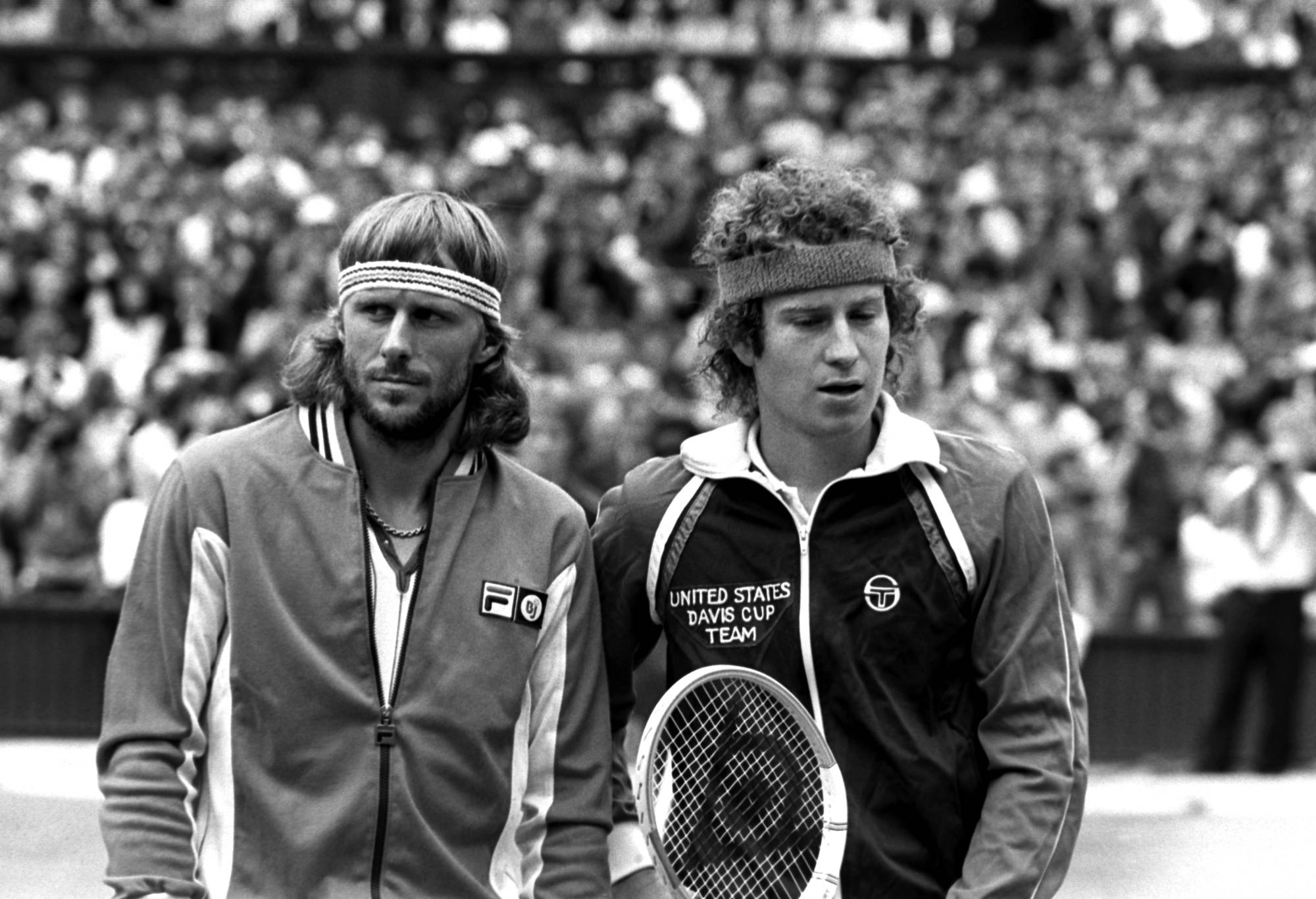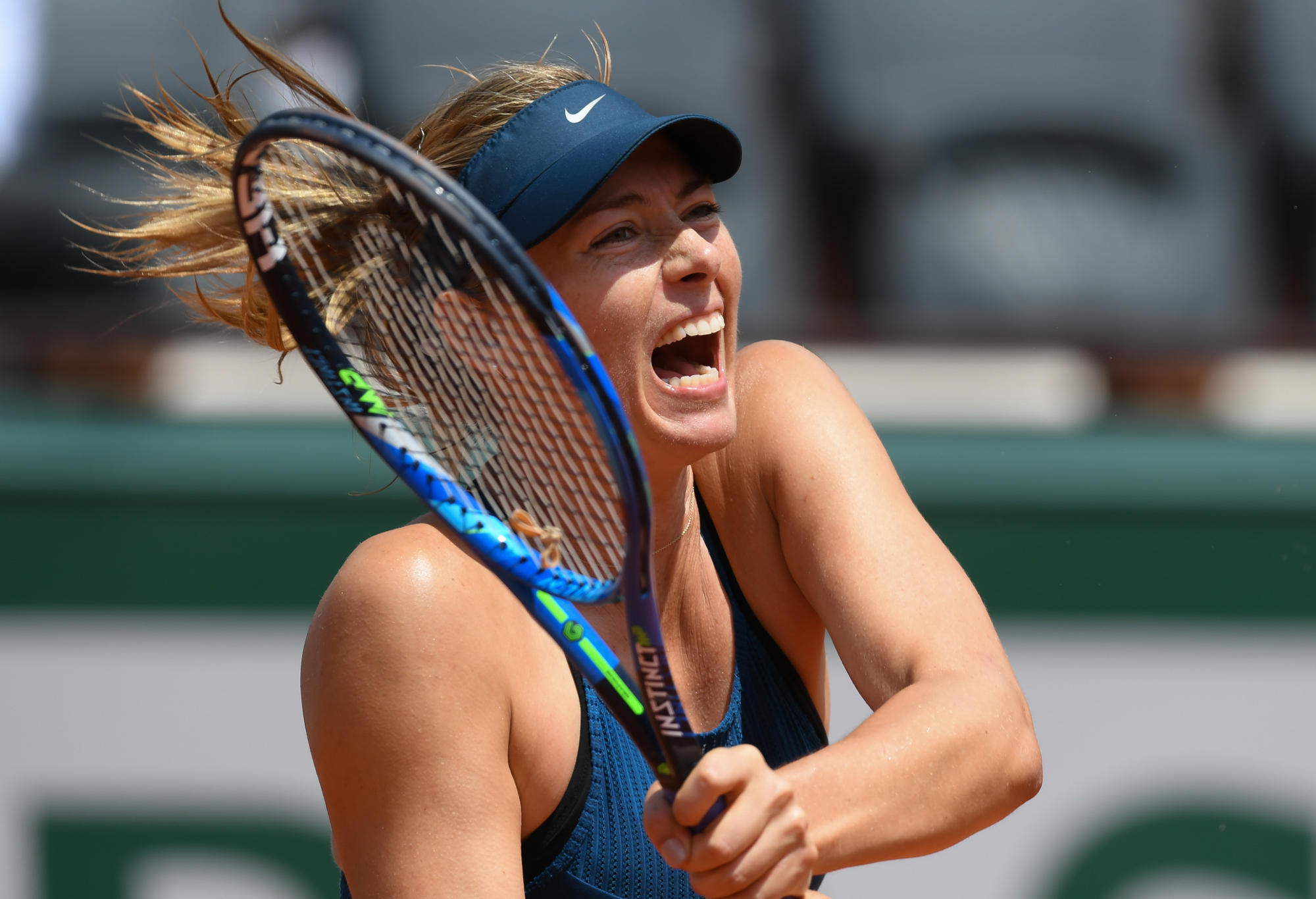Sweet revenge for Rafa as de Minaur downed to keep legend's Madrid fairytale alive
Alex de Minaur has missed out on the chance of a lifetime to beat Rafael Nadal on clay in successive tournaments, blown away by…
Opinion
Professional tennis players are amazing athletes, there’s no doubting their commitment, stamina and elite conditioning needed at the top level.
They’re also all about themselves with many of them prima donnas when it comes to being pampered before, during and after their matches.
Team players they ain’t. Like golfers and sprinters at the elite level, they aren’t programmed to care about teammates and they aren’t particularly bothered by how their antics affect the way the sport is perceived.
Tennis authorities aren’t renowned for cracking down on players because they know who brings the fans through the turnstiles.

(Photo by Kelly Defina/Getty Images)
Speeding up the game should be the top priority for tennis officials because players are getting away with too much.
Five-setters can be great but they can be a problem for spectators and broadcasters, particularly matches that start late and go long, like the Andy Murray vs Thanasi Kokkinakis second-round epic on Thursday night/Friday morning.
That match, which was decided 7-5 in the fifth when Murray snared a late break, went for five hours and 43 minutes, finishing at 4.05am.
For contrast, the 1980 Wimbledon final between Bjorn Borg and John McEnroe, which ended when the Swede won the fifth set 8-6, took three hours and 53 minutes, which was also in the Open era where TV ad breaks were factored in.
In the pre-Open era before 1968, players would not get a seated break when they changed ends during a set so even five-set matches at grand slams would rarely last more than two and a half hours.
Tennis authorities clearly need to be mindful of player welfare but there are a few key changes they can institute to improve the sport.

Bjorn Borg and John McEnroe at Wimbledon. (Photo by S&G/PA Images via Getty Images)
Limit bouncing the ball: Why do players need to bounce the ball umpteen times before serving? Novak Djokovic is one of the worst offenders, usually doing it a dozen times or more before serves – he used to have a superstition where he’d bounce it an even number of times on the deuce court and an odd number on the other side.
“I know it’s annoying for a lot of people and sometimes it’s annoying for me – I wish I could bounce it less and just get into the rhythm but sometimes, especially if it’s a tough moment and I’m a little bit tight and under pressure, I might bounce it a bit more,” he said in a 2021 interview about his irritating habit.
It’s gamesmanship, pure and simple.
Former Wimbledon champion Pat Cash has described Djokovic’s pre-serve routine as interminable and making a mockery of the rules.
And not even close to being necessary. German legend Boris Becker rarely bounced the ball after setting up before he served and he wasn’t bad at racking up the aces.
You don’t get to choose which ball you get: How much accumulated time is wasted by players demanding three balls from the poor old ballkids and then tapping one or two of them back after a cursory glance. It makes little to no difference but it’s another pointless ritual which has spread like wildfire in tennis.
Whichever ball you get served up from the ballkid, that’s the one you serve up to your opponent.
Towels are for swimmers: Can the modern player go more than a couple of points without pointing at their strategically placed towel near the baseline for the beleaguered ballkids to fetch on command? Once per game should surely be enough.
And if wristbands aren’t enough to keep your serving hand dry, the great Ivan Lendl got by with sawdust in the pockets of his short shorts in the 1980s and 90s on the way to winning eight grand slam titles.
Just don’t follow his advice when it comes to those hats with the sunflap at the back. Even if they protect the sun on the back of your neck, the goofiness factor outweighs any other benefits.
Grunting worse from the male of the species: Thankfully the shrieking of Maria Sharapova is no longer piercing eardrums but it appears the men on the circuit are now the worse offenders when it comes to grunts, moans and groans as they hit shots.
Bring in a shot clock with a buzzer: The Grand Slam Board in 2017 increased the time allowed between serves from 20 to 25 seconds six years ago. Cut it back to 20.
Have a shot clock on display and if the next serve doesn’t happen in the allotted time, a buzzer should go off and that becomes a fault (or a point conceded on a second serve).
It would not only speed up play but reward the fitter players who don’t need to soak up as much time as possible before the chair umpire finally loses patience with them.
Actually, make the sound of the buzzer a Sharapova shriek – that should be enough to discourage players from going over the limit.

Maria Sharapova. (CTK via AP Images)
Sudden-death deuce: The “Fast 4” has a bunch of funky rule changes to make that format of tennis much quicker, mainly revolving around a lower number of games or points needing to be won each set.
One innovation which it has instituted which should be considered in the traditional format is the sudden-death deuce. Once a game gets to 40-40, the next point wins.
It not only avoids the situation where a game could drag on for several more minutes, it creates drama with an all-or-nothing point to decide whether a player holds serve or gets broken.
Allow courtside coaching already: It’s tedious all this hullabaloo about players not being allowed to receive advice from their coaches, trainers, parents, practice partners, life partners, whoever else is sitting in their designated box.
Was that a hand signal? Did they say something tactical? Just let a coach sit courtside – it happens in Davis Cup and the difference is negligible.
If a player is reliant on someone else telling them where to hit the ball, they won’t be the one lifting the trophy at the end of the tournament anyway.
PLAYER OF THE DAY: Italian gun Jannik Sinner overcame a huge scare against Marton Fucsovics, fighting back from two sets down to reach the fourth round. In the process, he teed up a blockbuster clash with No.3 seed Stefanos Tsitsipas.
STAT OF THE DAY: World No.1 Iga Swiatek was in no mood to mess around in her third-round clash with Cristina Bucșa, crushing the Spaniard 6-0 61, to fall just short of a rare flawless match.
QUOTE OF THE DAY: “Don’t really know what to say …. Wow, this f***ing sport man,” Thanasi Kokkinakis posted on Instagram after trying to digest his shattering five-set defeat to Andy Murray.
TOURNAMENT SUMMARY: Stars fell with regularity during the opening four days, but Friday proved to be more straight-forward. In-form American Jessica Pegula set-up a fourth-round clash with 2021 French Open champion Barbora Krejcikova after the pair secured comfortable victories. Tsitsipas cruised past Dutchman Tallon Griekspoor in straight sets, winning 6-2 7-6 (7-5) 6-3. – factbox via AAP